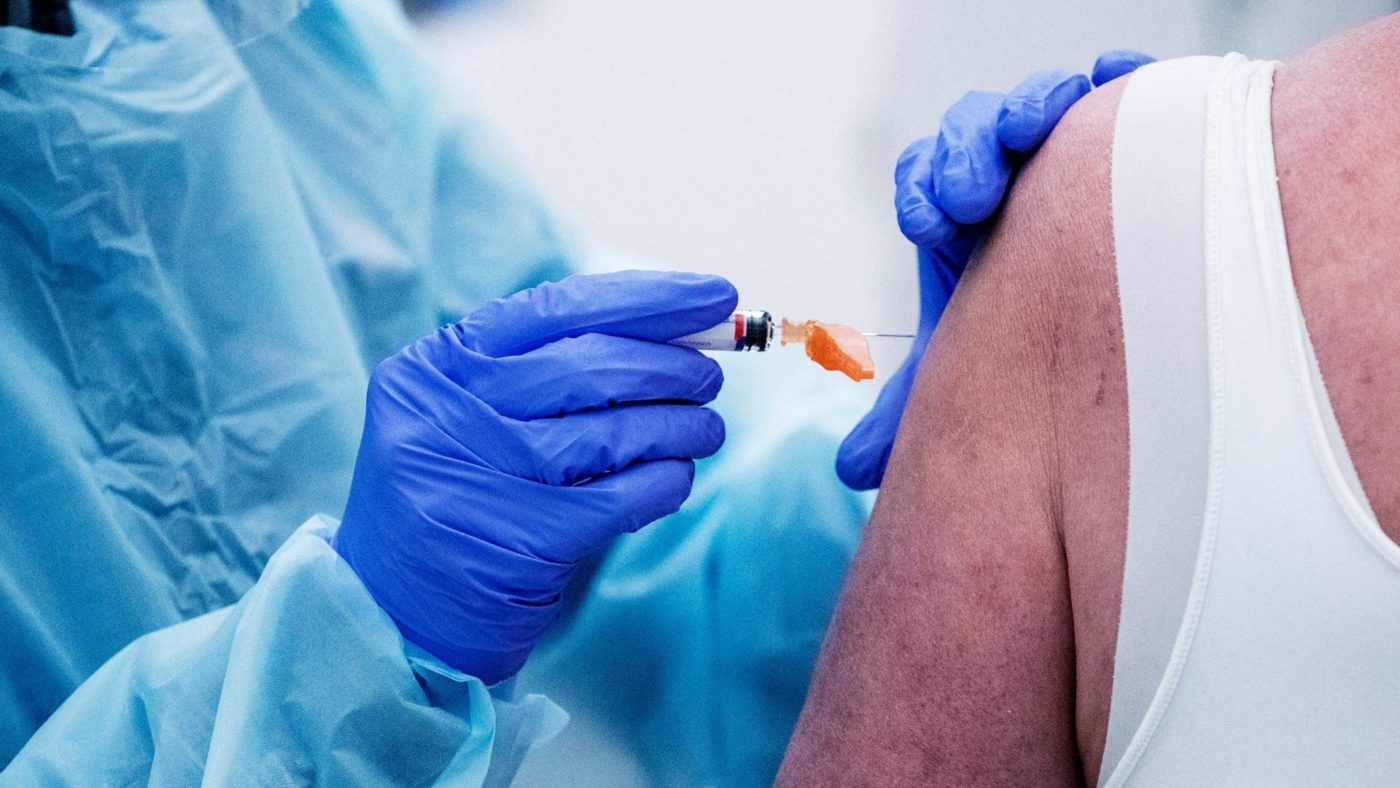After failing to stop the spread of Covid with contact tracing, quarantines, or lockdowns, Britain’s last hope for ending the coronavirus crisis in 2021 is a vaccine. The good news is that there are dozens of plausible candidates in development, with six in the late stages of the large-scale clinical trials needed to prove efficacy and safety. It looks very likely that the Government will be in a position to approve one by Christmas, with rollout beginning in January. The bad news is that the UK’s official vaccination strategy might better be described as a non-vaccination strategy.
The Vaccine Task Force has published details of the plan in the Lancet. Its chair, Kate Bingham, has confirmed the intention to vaccinate only those over 50, those with long-term health conditions, care home staff, and healthcare workers. At most it is envisaged that half the country is vaccinated by the end of 2021; in reality, if they stick to this plan, the total will be more like a third.
This is a potentially disastrous proposal that has not received nearly the amount of media scrutiny it deserves, resting as it does on a number of questionable assumptions.
Most importantly, it relies on a relatively pessimistic view of the vaccine’s effects. If the vaccine does not prevent or radically reduce infection and transmission of Covid-19, but only serves to weaken its symptoms, then a targeted vaccination programme makes more sense, since the young and middle-aged are at very low risk in any case. If, however, the vaccine is effective in preventing infection and transmission, we should vaccinate as many people as possible, especially in the groups driving community spread – older schoolchildren, students, and those of working age.
One problem is that clinical trials are not great at telling us how much a vaccine might reduce symptom severity and mortality. Why? Because the virus is most dangerous to the elderly, a group dramatically under-represented amongst trial participants. The primary purpose of these trials is to develop a vaccine which prevents infection – and if the Government approves a vaccine, it will do so based on the degree to which it achieves this. But – and here’s the rub – the current vaccination strategy outlined above ignores the very statistic on which approval will be based. If we have a vaccine that prevents infection, it should be used as widely as possible, not confined to the most at-risk groups.
Another problem with the official plan is that it assumes a relatively high degree of vaccine efficacy. While a 100% effective vaccine could indeed be successfully targeted at the most at-risk groups, and while the Vaccine Task Force may have preliminary efficacy data from the drug companies, most public domain writing on the subject assumes efficacy somewhere between 50-70%. Vaccinating 100% of the most vulnerable people with a 70% effective vaccine still leaves almost a third of vulnerable people at risk, reliant on a wider herd immunity that will, based on the current plan, not exist. Indeed, the lower the vaccine’s efficacy, the greater the need to vaccinate the entire population.
Lastly, the plan seems to implicitly assume that it would not be ethical to vaccinate young adults due to the risk of rare but severe side-effects unseen in Phase 3 trials. Yet the possibility of severe symptoms and death for young people due to Covid-19 is already known, with rough estimates of a 0.01 % infection fatality rate at age 25. Debilitating long-term after-effects of infection are reported in a worryingly large number of anecdotes. Nevertheless, a vaccine would have to be very risky indeed to be worse than the disease itself, even for the young.
The greatest concern about our current path is that if the Government only plans to vaccinate half the population – at most – it will not have the logistics in place to vaccinate the entire population, should this prove necessary. The result will be months of chaos and yet more economic damage. Lingering fear of the virus, combined with continuing restrictions, will choke the recovery throughout next year and life not will return to anything like normal until well into 2022. As resilient as the British public have been in this crisis, their patience will be sorely tried.
Maximum transparency should be the guiding principle as the vaccination strategy comes under the spotlight. The modelling that underpins the decision to adopt an age-stratified, targeted approach should be made public, and the Government should be honest about how many doses of which vaccines it has ordered, the status of those orders, and the logistic challenges of mass vaccination. Safety trials on children for all advanced vaccine candidates should be urgently prioritised, although some firms – such as Pfizer – have begun this work already. As Ryan Bourne and Sam Bowman have argued on CapX, the Government should also consider the need to pay people to take the vaccine, providing compensation to overcome understandable reluctance.
If the Government thinks it lacks the state capacity to vaccinate the population in a timely manner, or if the first wave of data from the Phase 3 trials is underwhelming, ministers should reconsider the current strategy of trying to keep infections down while waiting for the vaccine to arrive. Ultimately the best way to avoid relying on a vaccine is to be in China’s enviable position: having entirely eradicated the virus at home, it now can focus on selling its vaccines to the rest of the world.
Click here to subscribe to our daily briefing – the best pieces from CapX and across the web.
CapX depends on the generosity of its readers. If you value what we do, please consider making a donation.


